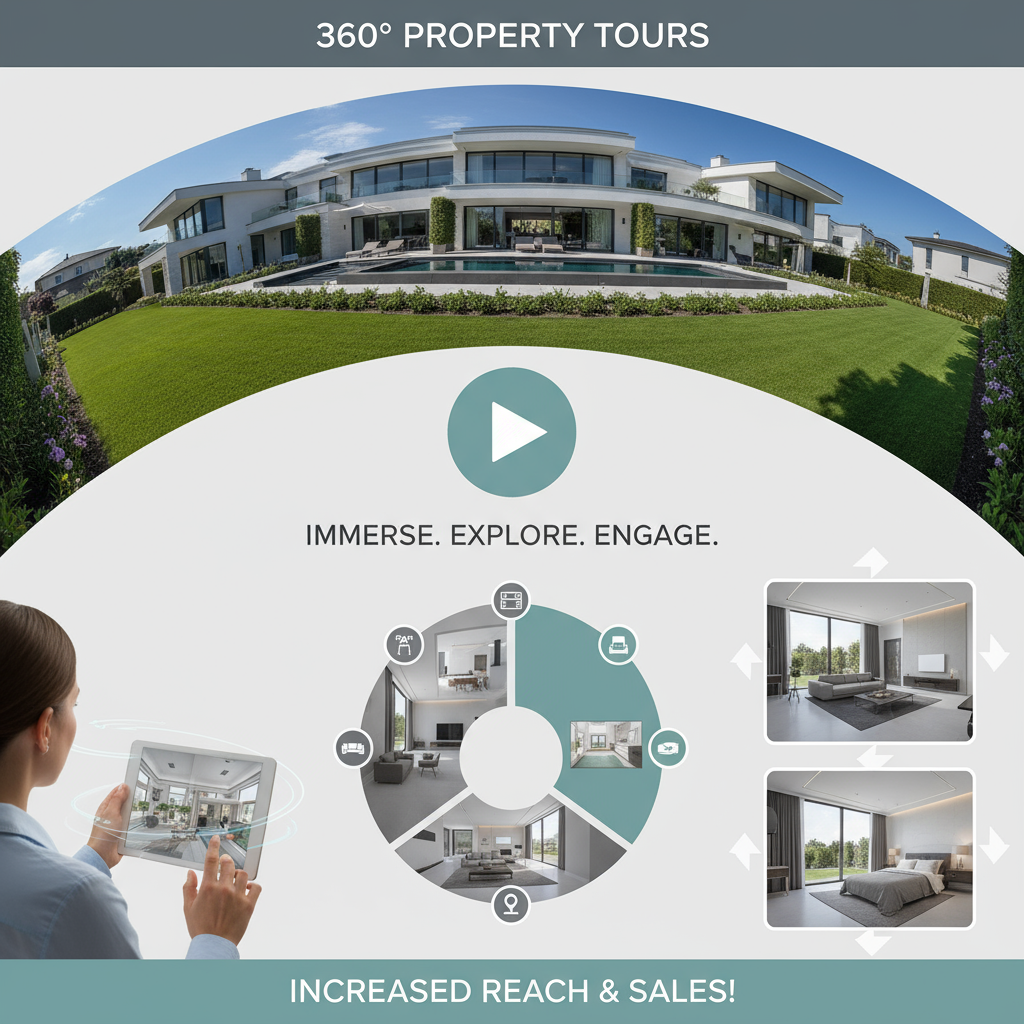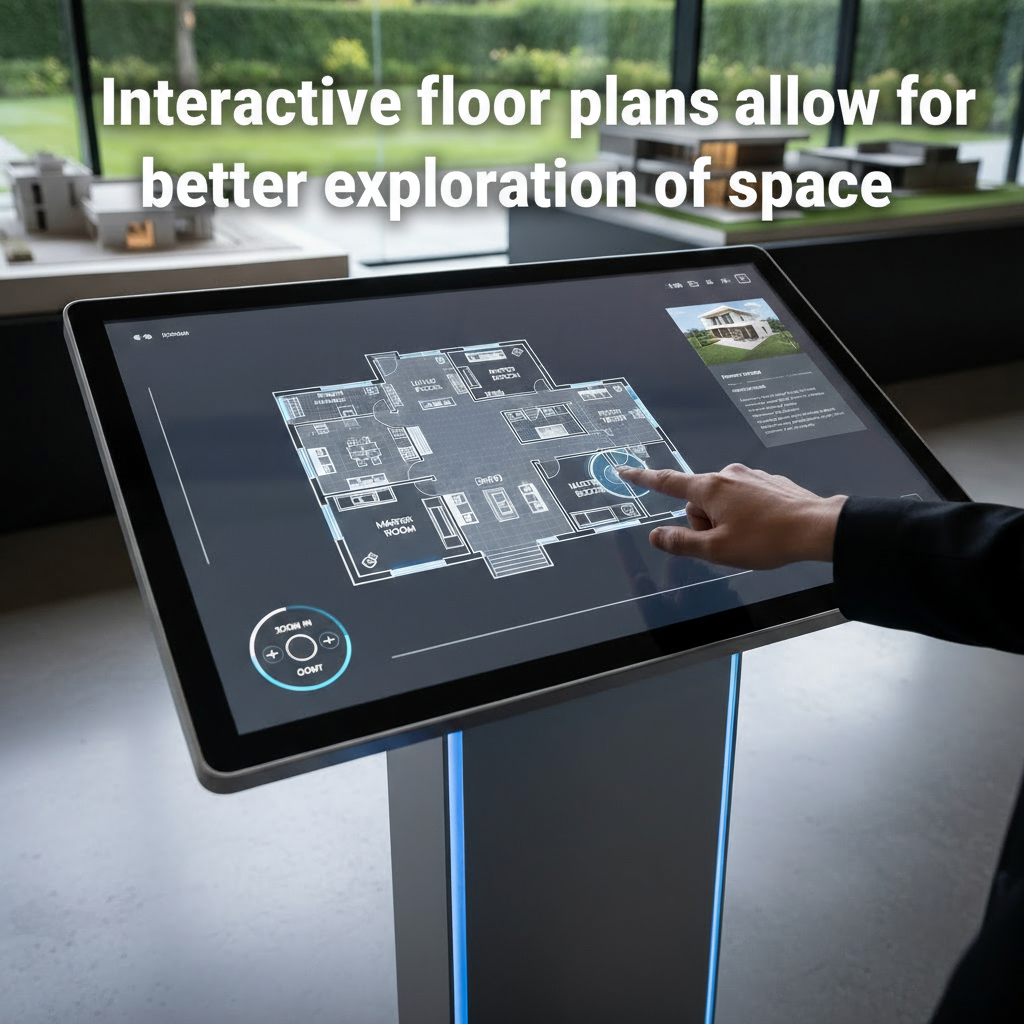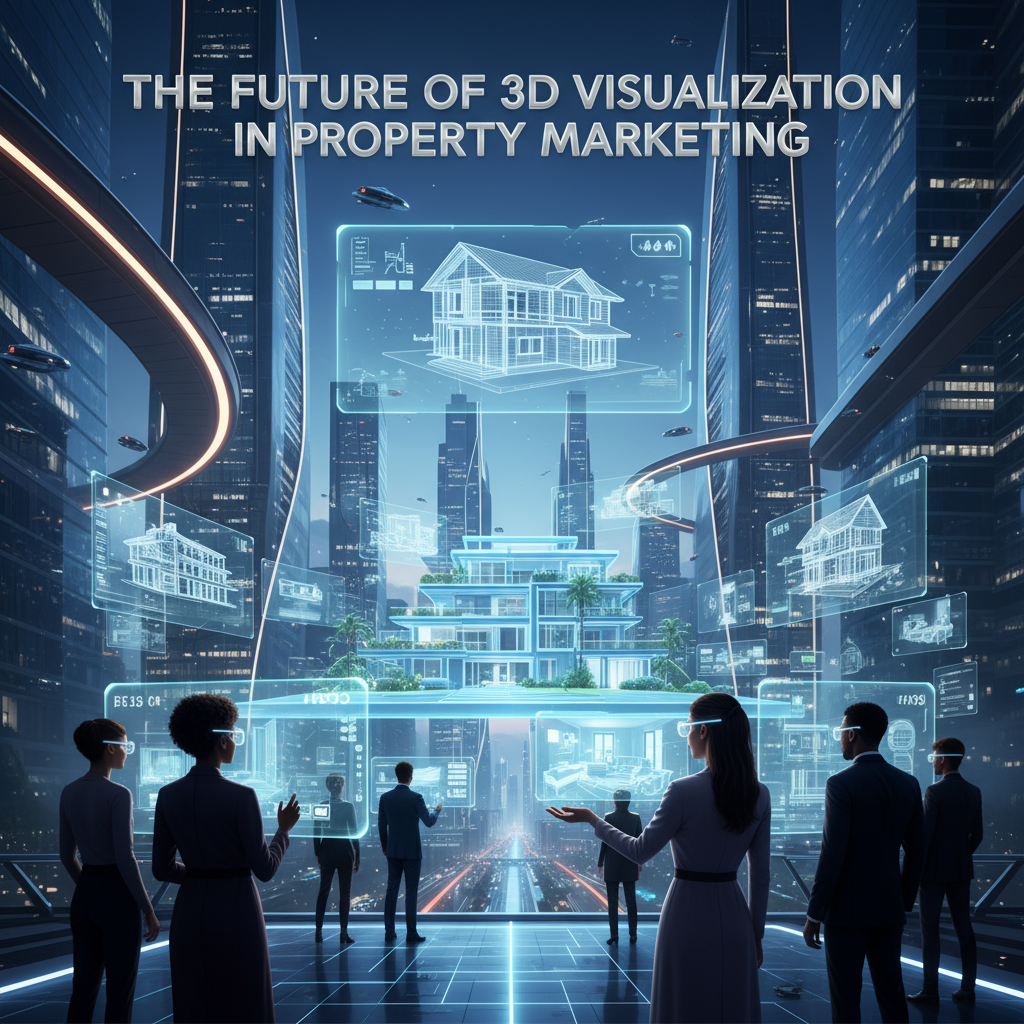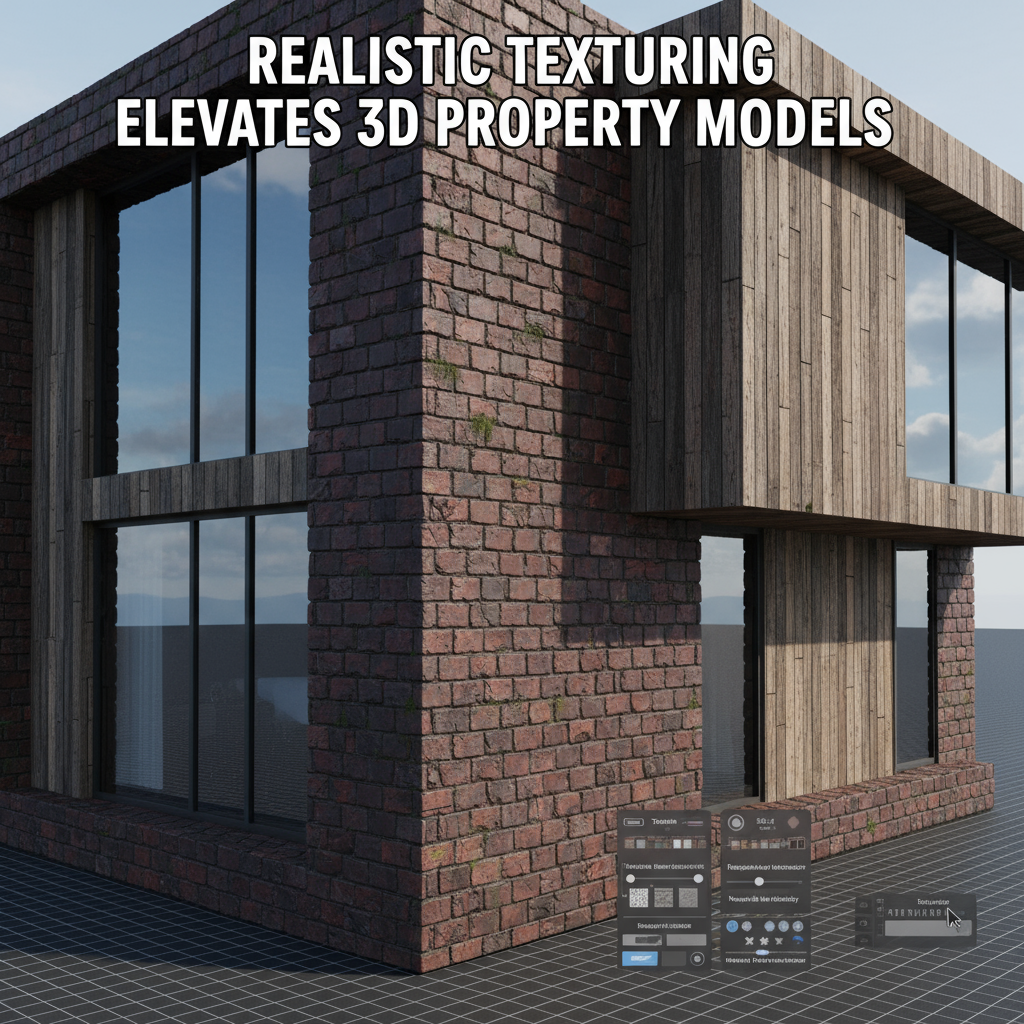The property market moves fast, and so do buyer expectations. Today’s home-buyer whether local or halfway across the world wants to feel a space before they commit. That’s where 3D visualization comes in: it turns static listings into immersive experiences, speeds decision-making, and lifts conversion rates. can use in content, campaigns or client pitches.
How VR is transforming property tours and enhancing the customer experience
Virtual Reality turns flat floor plans and photos into walkable spaces. VR enables buyers to explore scale, sightlines and flow things that photos and floorplans rarely communicate. For premium and off-the-plan properties, VR creates an emotional connection faster than traditional media.
The role of VR in remote property marketing for global audiences
International buyers, off-plan investors and busy professionals appreciate the ability to attend virtual open houses from anywhere. VR reduces geographic friction, shortens sales cycles and helps agents present multiple properties in one polished session.
How AR allows potential buyers to interact with property designs in real time
AR overlays furniture, finishes or renovation ideas onto a real space using a phone or tablet. It’s ideal for staging: buyers can test different furniture layouts and materials, seeing how tone and scale work in situ.
Use cases of AR in showing property features and designs to clients
From finishing options in apartments to landscaping concepts for houses, AR is an excellent upsell tool. Builders and developers can let prospects toggle cabinetry colours, floor finishes and lighting schemes — boosting confidence and reducing ‘buyer’s remorse.

The Benefits of 360-Degree Photos for Property Marketing
- Provide a full panoramic view of rooms and outdoor spaces in one shot.
- Faster and more cost-effective to produce than full 3D models.
- Easily integrated into real estate listing portals, websites, and property apps.
- Compatible with marketing channels like email campaigns and social media feeds.
- Create a more immersive experience compared to static images.
How 360-Degree Images and Videos Help Clients Visualise Spaces Better than Traditional Photos
- Preserve spatial context by showing how rooms connect and flow together.
- Allow viewers to control their perspective and explore at their own pace.
- Build trust by reducing surprises during physical inspections.
- Increase engagement, with users spending more time interacting with listings.
- Support decision-making by giving buyers a clearer sense of scale, layout, and ambience.
How AI-Driven 3D Rendering is Transforming Property Visualization
- Automates repetitive tasks such as light baking, material matching, and denoising, saving production time.
- Enables faster project turnarounds and more design iterations for clients.
- Reduces overall production costs for studios, developers, and marketers.
- Uses machine learning to enhance realism with improved textures and scene accuracy.
- Employs generative and neural rendering techniques for hyper-realistic outputs.
- Suggests furniture, staging, and design variations automatically, boosting creativity and efficiency.
- Delivers high-quality, photorealistic results at a fraction of the traditional effort.
Real-Time 3D Visualization: Faster and More Interactive Experiences
Real-time 3D visualization allows property buyers and investors to interact with spaces instantly changing finishes, adjusting lighting, or exploring layouts on the spot. Unlike static renders, it delivers a dynamic, immersive experience that speeds up decision-making, builds buyer confidence, and reduces back-and-forth between clients and developers. For real estate marketing, it means faster presentations, higher engagement, and stronger conversions.
Benefits of real-time 3D in property marketing
Real-time engines let clients switch finishes, open doors or change lighting live during a presentation. This interactivity shortens the feedback loop and gives clients a sense of control very persuasive when selling high-value units.
How real-time 3D tech enhances client decision-making through interactive tools
When buyers can instantly visualise a renovation or fixture change, they make decisions faster and with greater confidence. Integrating pricing toggles into real-time demos also streamlines upsell pathways.

Interactive Floor Plans: Enhancing Property Visualization
Interactive floor plans go beyond static blueprints by combining clear layouts with clickable, immersive features. Buyers can zoom into rooms, view dimensions, toggle between 2D and 3D, or even explore furniture placement in real time. This hands-on approach helps clients understand space flow, scale, and functionality more effectively, reducing uncertainty and improving decision-making.
The growing trend of interactive floor plans in property marketing
Interactive plans combine schematic clarity with immersive context: click a room to open a 3D view, tap a furniture item to see specs, or measure sightlines directly from the plan.
How interactive floor plans allow for better exploration of space
- Provide a clearer understanding of spatial flow compared to static 2D blueprints.
- Especially effective for multi-level homes and complex commercial layouts.
- Allow users to zoom in, rotate, and explore spaces from multiple perspectives.
- Help buyers visualise furniture placement and functionality in real time.
- Reduce repetitive questions from buyers, saving time for agents and developers.
- Improve lead quality by giving prospects a deeper sense of the property before site visits.
3D Visualization for Real Estate Development
- Developers use 3D masterplans, streetscape renders and animated flythroughs to communicate scale, massing and amenity placement essential for pre-sales or funding rounds.
- Well-crafted pre-construction visuals can create pipeline demand months before ground is broken, increasing early deposits and enabling better phasing decisions.
- Immersive Property Tours with 3D Visualization
The evolution of property tours with immersive 3D technology
Virtual open houses are now immersive, multi-user experiences: prospective buyers join guided tours, ask questions in real time, and request custom views — all without leaving home.
Benefits of offering virtual open houses and remote property walkthroughs
They reduce overheads for agencies, expand reach, and attract serious buyers. Virtual tours can also capture analytics (heatmaps, time spent per room) that inform follow-up and retargeting campaigns.

The Future of 3D Visualization in Property Marketing
What’s next for 3D visualization in the property marketing space
Expect mixed reality, richer AI personalization, and tighter integrations between property data, pricing engines and visualization tooling.
Emerging technologies to keep an eye on
- Mixed Reality (MR) for blended on-site/virtual staging.
- Blockchain for provenance on virtual assets and secure virtual property viewings.
- Procedural generation for large masterplans and instant variation sets.
Cost vs. Benefit: Is 3D Visualization Worth the Investment for Real Estate?
3D visualization may require an upfront investment, but the returns are significant. It helps developers and agents market properties faster, attract more qualified leads, and close deals at higher values.
Analysing the ROI of adopting 3D visualization tools in property marketing
Costs vary by complexity: a quick 360 shoot is inexpensive; high-end real-time builds and bespoke VR suites cost more. However, the benefits include faster sales, higher conversion rates, higher average sale prices (especially in premium segments), and reduced costly physical staging.
The Role of 3D Animation in Real Estate Presentations
- Animation brings narrative to property marketing sunrise to sunset lighting, people movement, and lifestyle context. It’s highly effective for premium projects where story and aspiration matter.
- High-net-worth buyers respond to cinematic storytelling. Animated presentations are often used in investor decks and marketing suites to communicate lifestyle, not just layout.
The Importance of Realistic Texturing in 3D Property Models
In today’s competitive property market, 3D visualization has become a powerful marketing tool. However, what truly separates average renders from show-stopping visualisations is realistic texturing. It’s the small details, the subtle grain in timber, the reflective sheen on polished tiles, or how light scatters through frosted glass that make a digital model look believable and emotionally engaging.

Key Benefits of Realistic Texturing
Enhances believability: Buyers feel more confident when visuals closely resemble real-world materials.
Strengthens emotional appeal: Fine details create an aspirational “wow” factor.
Supports better decision-making: Helps clients evaluate finishes, materials, and design choices before construction.
Differentiates marketing: High-quality renders stand out in crowded property listings.
Reduces costly changes: Buyers can visualise end results upfront, minimising last-minute alterations.
How Realistic Texturing Elevates 3D Property Models
Textures are not just about aesthetics they directly influence how a space is perceived. A luxury apartment feels truly high-end when materials like marble, timber, and glass are rendered with precision.
- Timber flooring: Visible grain patterns add warmth and natural character.
- Tiles and grout: Subtle sheen and detail bring authenticity to bathrooms and kitchens.
- Glass surfaces: Frosted or transparent glass affects light flow and ambience.
- Fabric finishes: Textured upholstery or curtains create a sense of comfort and realism.
Achieving Hyper-Realistic Textures
Creating textures that feel real requires both technical skill and creative precision. Here are the most effective methods used in modern property visualisation:
High-Resolution PBR Maps
- What it is: Physically Based Rendering (PBR) maps simulate how light interacts with surfaces.
- Features: Diffuse maps (base colour), Normal maps (surface bumps/details), Roughness maps (shininess control), Metallic maps (reflective properties)
- Benefit: Provides photo-real accuracy for any material, from glossy marble to matte concrete.
Layered Materials
- What it is: Combining multiple textures to create depth and variation.
- Example: A timber floor with varnish, grain, and subtle wear patterns layered together.
- Benefit: Adds realism by avoiding “flat” or uniform textures that look computer-generated.
Procedural Dirt and Wear
- What it is: Algorithm-generated imperfections such as scratches, smudges, or dust.
- Example: Light scuffs on polished floors or weathering on exterior stone.
- Benefit: Makes models look more natural and lived-in, improving authenticity.
Correct Lighting Setups
- What it is: Accurate light placement and behaviour to complement textures.
- Example: Sunlight scattering on frosted glass or warm reflections on polished timber.
- Benefit: Brings out material details, enhancing realism and mood.
AI Denoising and Post-Production
- What it is: Artificial intelligence tools that clean up renders and enhance detail.
- Example: Removing grainy output and sharpening textures.
- Benefit: Faster rendering times and polished results without compromising quality.
Benefits of Realistic Texturing in Property Marketing
For Developers
- Pre-sell properties off-plan with highly convincing visuals.
- Showcase multiple finish packages without building physical showrooms.
- Attract investors by communicating design quality clearly.
For Agents
- Present properties more effectively in listings and presentations.
- Build stronger buyer engagement with visuals that feel real.
- Reduce wasted site visits from unqualified leads.
For Buyers
- Visualise how finishes and materials look in real spaces.
- Compare different design choices easily before committing.
- Gain confidence in their purchase decisions.
Real-World Impact: Why Texturing Delivers ROI
- Higher conversions: Listings with photoreal visuals generate more enquiries.
- Faster sales cycles: Buyers make decisions sooner when they can clearly visualise.
- Premium pricing: Properties presented with high-quality renders are perceived as higher value.
Bring Your Property Visuals to Life with Realistic 3D Texturing
Showcase every detail from timber grains to polished finishes with renders that inspire confidence and drive sales.


